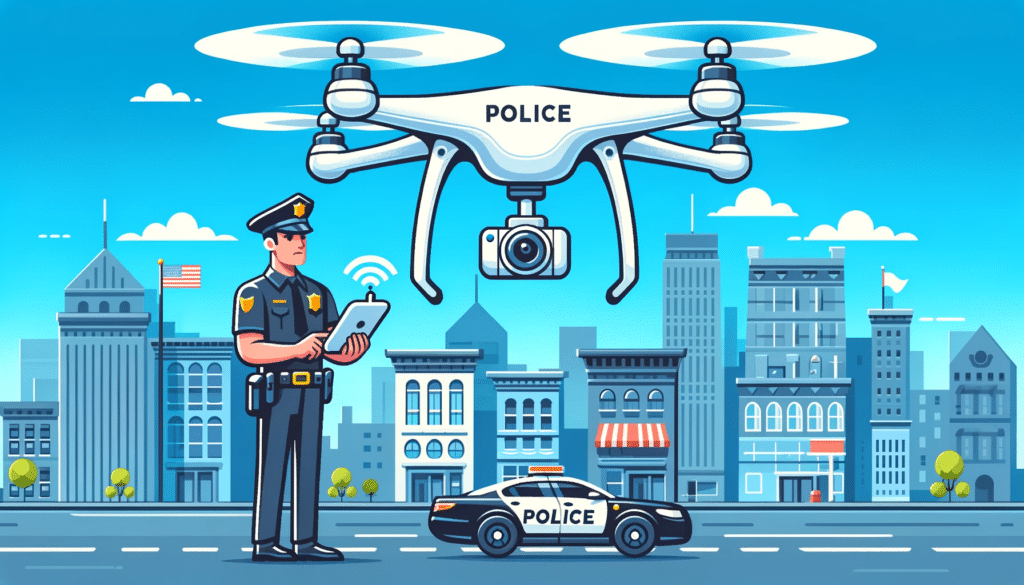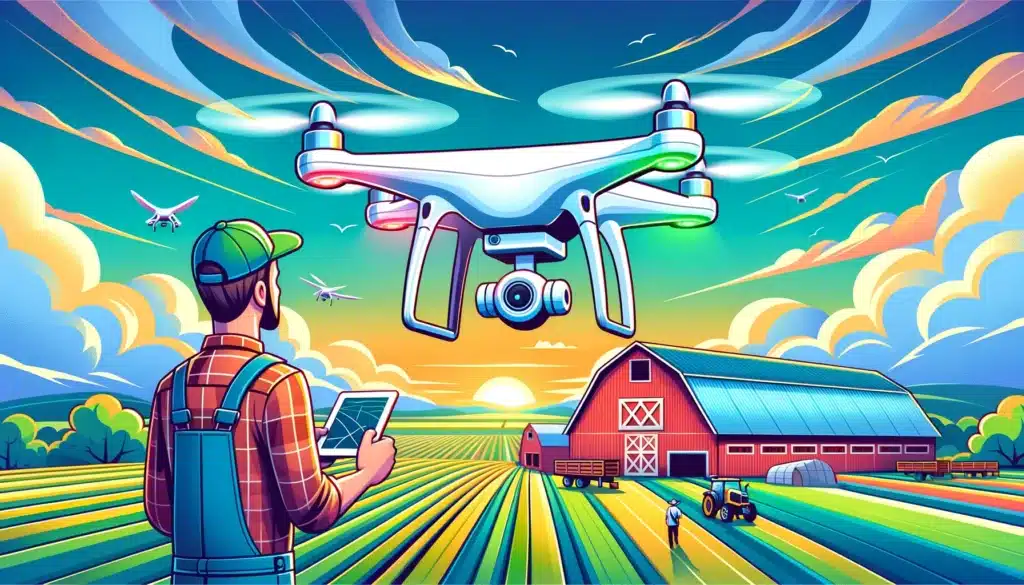Drones have soared beyond mere fascination and have become pivotal tools in various industries. At the heart of this transformation are Drone Software Development Kits (SDKs), essential frameworks that empower developers to unlock the full potential of drone technology. As we delve into the world of SDKs, understanding their impact, features, and applications becomes crucial for anyone looking to capitalize on this advancing field. In this article, we will explore the dynamic landscape of Drone SDKs, shedding light on how they are reshaping the capabilities and versatility of drones.
Key Takeaways
- Drone Software Development Kits (SDKs) are essential tools for customizing drone applications, offering APIs, libraries, and sample code for developers.
- SDKs enhance drone capabilities, enabling advanced navigation, improved data management, and autonomous operations.
- Leading SDKs like DJI, Parrot, and Intel offer distinct features: DJI for broad applications, Parrot for user-friendliness, and Intel for data analytics.
- Real-world applications of SDKs span across agriculture, search and rescue, infrastructure inspection, and environmental monitoring, demonstrating their versatility.
- Challenges in SDK development include ensuring compatibility, security, performance, and regulatory compliance, which are critical for safe and efficient drone operation.
- When choosing an SDK, factors like compatibility, features, support, and cost are crucial, and developers should stay informed about updates in drone technology.

What are Drone Software Development Kits?
Drone Software Development Kits, commonly referred to as SDKs, are the linchpins in the realm of drone technology. These kits provide developers with the tools, libraries, and code samples needed to create custom applications for drone control and data management.
Defining Drone SDKs
At their core, Drone SDKs are a set of software building blocks. They are designed to simplify the complex process of coding for drone operations. SDKs typically include APIs (Application Programming Interfaces), which act as intermediaries allowing different software applications to communicate with the drone’s hardware.
Components of Drone SDKs
Drone SDKs typically consist of several key components:
- APIs: Enable communication between the software and drone hardware.
- Libraries: Pre-written code that developers can use to perform common tasks.
- Documentation: Guides and references for developers to understand and use the SDK effectively.
- Sample Code: Examples of code for common use cases, aiding in faster development.
The Evolution of SDKs in Drone Technology
Drone SDKs have evolved significantly, paralleling the advancements in drone technology. Initially, these kits were basic, offering limited control and functionality. However, as drones have become more sophisticated, so have the SDKs, now offering advanced features such as real-time data streaming, autonomous flight control, and more.
Benefits of Using Drone SDKs
The use of Drone SDKs in drone technology comes with a myriad of benefits, transforming how drones are utilized across various sectors.
Customization and Flexibility
One of the primary advantages of SDKs is the level of customization they offer. Developers can tailor applications to meet specific needs, whether it’s for photography, surveying, delivery, or surveillance. This flexibility ensures that drones can be adapted to a wide range of industries and use cases.
Enhancing Drone Capabilities and Performance
Drone SDKs enable significant enhancements in drone capabilities. These improvements include but are not limited to:
- Improved Navigation: SDKs allow for the development of more sophisticated navigation algorithms.
- Data Management: Enhanced ability to gather, process, and transmit data.
- Autonomous Operations: Development of autonomous flight patterns and decision-making processes.
Table: Comparison of Drone SDK Benefits
| Benefit | Description |
|---|---|
| Customization | Tailor drone applications to specific industry needs. |
| Enhanced Navigation | Develop advanced navigation algorithms for precise movements. |
| Improved Data Management | Efficiently gather, process, and transmit large volumes of data. |
| Autonomous Operations | Implement autonomous flight and decision-making capabilities. |
By harnessing the power of Drone SDKs, developers and companies can significantly enhance the operational efficiency and functionality of drones, opening up new possibilities and applications in various fields.

Key Features of Leading Drone SDKs
The landscape of Drone Software Development Kits is diverse, with each SDK offering a unique set of features tailored to different requirements. Let’s explore the key features of some leading SDKs in the market.
Overview of Popular SDKs
DJI SDK
DJI, a frontrunner in the drone industry, offers an SDK that is renowned for its comprehensive features, supporting a wide range of applications from aerial photography to industrial inspections.
Parrot SDK
Parrot’s SDK stands out for its user-friendly interface, making it accessible for beginners, yet robust enough for advanced applications, particularly in research and educational contexts.
Intel Drone SDK
Intel’s SDK is noted for its focus on data processing and analytics, catering to industrial and commercial users who require advanced data capabilities.
Comparison of Features and Capabilities
Each of these SDKs brings unique strengths to the table. Here’s a comparative overview:
| Feature | DJI SDK | Parrot SDK | Intel Drone SDK |
|---|---|---|---|
| User Interface | Advanced | User-friendly | Advanced |
| Application Range | Broad | Educational/Research | Industrial/Commercial |
| Data Processing | High | Moderate | High |
| Flight Control | Precise | Good | Precise |
| Real-Time Data Streaming | Yes | Limited | Yes |
These SDKs are constantly evolving, with updates and new features added regularly to keep pace with the fast-changing drone technology landscape.
Real-World Applications of Drone SDKs
Drone SDKs are not just theoretical tools; they have practical applications across various industries, revolutionizing the way tasks are performed.
Case Studies and Success Stories
Agriculture
Farmers use drones equipped with SDK-enabled applications for precision agriculture. Drones can analyze soil, monitor crop health, and even assist in planting and harvesting.
Search and Rescue
In search and rescue operations, drones with advanced navigation and imaging capabilities have been instrumental in locating missing persons in challenging terrains.
Infrastructure Inspection
Drones are used for inspecting infrastructure like bridges, buildings, and power lines. SDKs allow for the development of applications that can process and analyze structural data in real-time.
Diverse Industries Benefiting from SDKs
| Industry | Application |
|---|---|
| Environmental Monitoring | Tracking wildlife, monitoring environmental changes |
| Filmmaking | Aerial cinematography, dynamic shooting angles |
| Public Safety | Crowd monitoring, disaster management |
| Real Estate | Property showcasing, aerial photography |
The versatility of Drone SDKs is evident in their widespread applications, proving that the potential of drones is limited only by the imagination and creativity of the developers and industries using them. This technological revolution is leading to more efficient, safe, and innovative solutions across the globe.

Challenges and Considerations in SDK Development
The development of Drone Software Development Kits, while promising, comes with its set of challenges and considerations. Addressing these is crucial for the advancement and responsible use of drone technology.
Technical Challenges in SDK Development
Compatibility and Integration
Ensuring that SDKs are compatible with various drone models and hardware components is a significant challenge. Integration with existing systems and software also poses complexities.
Security Concerns
With the increasing use of drones, security becomes a paramount concern. SDK developers must implement robust security protocols to prevent unauthorized access and control.
Performance and Reliability
Developing SDKs that offer consistent performance and reliability, especially in varying environmental conditions, is critical. Drones must operate safely and efficiently under different scenarios.
Regulatory Challenges
Compliance with aviation and privacy laws is a major challenge for SDK developers. Regulations vary by country and region, necessitating adaptable and compliant SDKs.
| Challenge | Description |
|---|---|
| Compatibility | Ensuring SDKs work with diverse drone models and systems. |
| Security | Implementing strong security measures to safeguard operations. |
| Performance | Maintaining reliability across various conditions. |
| Regulatory Compliance | Adhering to aviation and privacy laws. |
Future Considerations for Developers
Looking ahead, developers must focus on sustainability, ethical use, and continuous innovation to keep pace with technological advancements and societal needs.
How to Choose the Right SDK for Your Needs
Selecting the appropriate Drone SDK is a critical decision that can significantly impact the effectiveness and success of your drone projects.
Factors to Consider When Selecting an SDK
Compatibility
Ensure the SDK is compatible with your drone model and the hardware you intend to use.
Features and Capabilities
Identify the features you need for your specific application, such as data processing, real-time streaming, or autonomous flight capabilities.
Support and Community
Consider the level of support offered by the SDK provider and the presence of an active developer community for troubleshooting and advice.
Cost and Licensing
Evaluate the cost of the SDK and understand the licensing agreements, especially if you are developing commercial applications.
Tips for Successful Integration
- Start with a Clear Objective: Understand your project requirements to choose an SDK that aligns with your goals.
- Test and Iterate: Experiment with different SDKs if possible, and iterate based on performance and results.
- Stay Informed: Keep up-to-date with the latest developments and updates in drone technology and SDK features.
By carefully considering these factors and tips, you can select a Drone SDK that not only meets your current needs but also scales with your future projects, ensuring long-term success in your drone endeavors.
Key Features of Leading Drone SDKs
DJI SDK
Pros:
- DJI SDK provides full flight control, access to telemetry data, camera and gimbal control, and features like obstacle avoidance and live video feed.
- Offers various SDKs like Mobile SDK, Windows SDK, Onboard SDK, UX SDK, and Payload SDK catering to different development needs.
- Enables direct communication with DJI aircraft and flight controllers through a serial interface for telemetry and flight control.
Cons:
- Not free; requires contact with DJI for detailed information and pricing.
- May be complex for beginners, requiring a basic understanding of Android Development and drones.
(Source: DJI Enterprise, UAVHUB)
DroneKit SDK/API
Pros:
- Free and open-source, allowing for broad access and community-driven development.
- Supports autonomous flight features, intelligent path planning, and live telemetry.
- Compatible with all major drone platforms.
Cons:
- Lacks dedicated customer support due to its open-source nature.
- May require a higher level of programming knowledge for effective use.
(Source: PLCGurus.NET)
FlytBase SDK/API
Pros:
- Supports all popular drone models, sensors, and cloud services.
- Offers unique features like unified APIs and a drone simulator feature.
- Suitable for building Android control apps with a variety of APIs.
Cons:
- Not an open-source platform; registration and possibly fees required.
- Might have a steeper learning curve for beginners.
(Source: PLCGurus.NET)
Parrot SDK/API
Pros:
- Free SDK with sample code repositories, easing the development process.
- Compatible with various popular drone platforms and supports both Android and iOS.
- Allows the addition of features like media saving/downloading and autopilot flight plans.
Cons:
- Model-specific, which might limit its versatility across different Parrot drones.
- Based on C/C++, requiring familiarity with these programming languages for effective use.
(Source: PLCGurus.NET)
Each of these SDKs caters to different needs and skill levels, offering a range of functionalities for drone programming and control. Choosing the right one depends on the specific requirements of your project and your proficiency in programming and drone operation.
The following table compares the key features of various Drone Software Development Kits (SDKs), each offering unique capabilities and suited for different development needs. Understanding these differences can help you select the most appropriate SDK for your project.
| Feature / SDK | DJI SDK | DroneKit SDK/API | FlytBase SDK/API | Parrot SDK/API |
|---|---|---|---|---|
| Pricing | Paid | Free (Open Source) | Paid (Registration Required) | Free |
| Compatibility | Wide Range of DJI Drones | Major Drone Platforms | Popular Drone Models | Various Popular Drone Platforms |
| Programming Languages | Depends on Specific SDK | Primarily Android Development | Android for FlytSDK | C/C++ |
| Unique Features | Comprehensive Flight Control, Obstacle Avoidance, Live Video Feed | Autonomous Flight, Intelligent Path Planning, Live Telemetry | Unified APIs, Drone Simulator Feature | Media Save/Download, Autopilot Flight Plans |
| Target Users | Advanced Developers, Commercial Use | Developers with High-Level Programming Knowledge | Professional Developers, Commercial Applications | Developers Familiar with C/C++ |
| Support | Technical Support Available | Community-Driven, No Dedicated Support | Technical Support Available | Sample Code Repositories |
| Ease of Use | Complex, Requires Understanding of Specific SDK | Requires Programming Knowledge | Registration and Learning Curve | Model-Specific, Requires C/C++ Proficiency |
Recommendations Based on Different Needs
For Advanced Commercial Applications: DJI SDK is recommended for its comprehensive features and support for a wide range of DJI drones. It’s ideal for complex projects requiring robust control and data capabilities.
For Open Source Enthusiasts and Experimenters: DroneKit SDK/API, being open-source, is suitable for those who prefer community-driven development and have a good grasp of high-level programming, especially Android development.
For Diverse Commercial Use with Additional Features: FlytBase SDK/API is suitable for professional developers who require a range of features including unified APIs and a drone simulator, and are willing to navigate a registration process.
For Developers Comfortable with C/C++: Parrot SDK/API is a good choice for those looking for a free SDK that supports various popular platforms and is comfortable with programming in C/C++.
Selecting the right SDK depends on your specific requirements, programming proficiency, and the nature of your project. Each SDK offers unique advantages, and the best choice will align with your development goals and technical capabilities.
As we conclude our exploration of Drone Software Development Kits, it’s evident that they are not just technological advancements but catalysts for innovation and efficiency. From enhancing customization to pushing the boundaries of drone capabilities, SDKs have established themselves as indispensable tools in the drone industry.
For those eager to delve deeper into the world of drone entrepreneurship, we highly recommend visiting Soaring High: A Comprehensive Guide to Building and Growing Your Drone Business. This resource is a treasure trove of insights and strategies, perfectly complementing the knowledge you’ve gained about SDKs.
Remember, whether you are looking to integrate drone technology into your business or seeking expert advice on drones, Blue Falcon Aerial is here to assist. For any drone-related services or inquiries, feel free to contact us. Together, let’s harness the power of drone technology to elevate your projects and goals to new heights.




